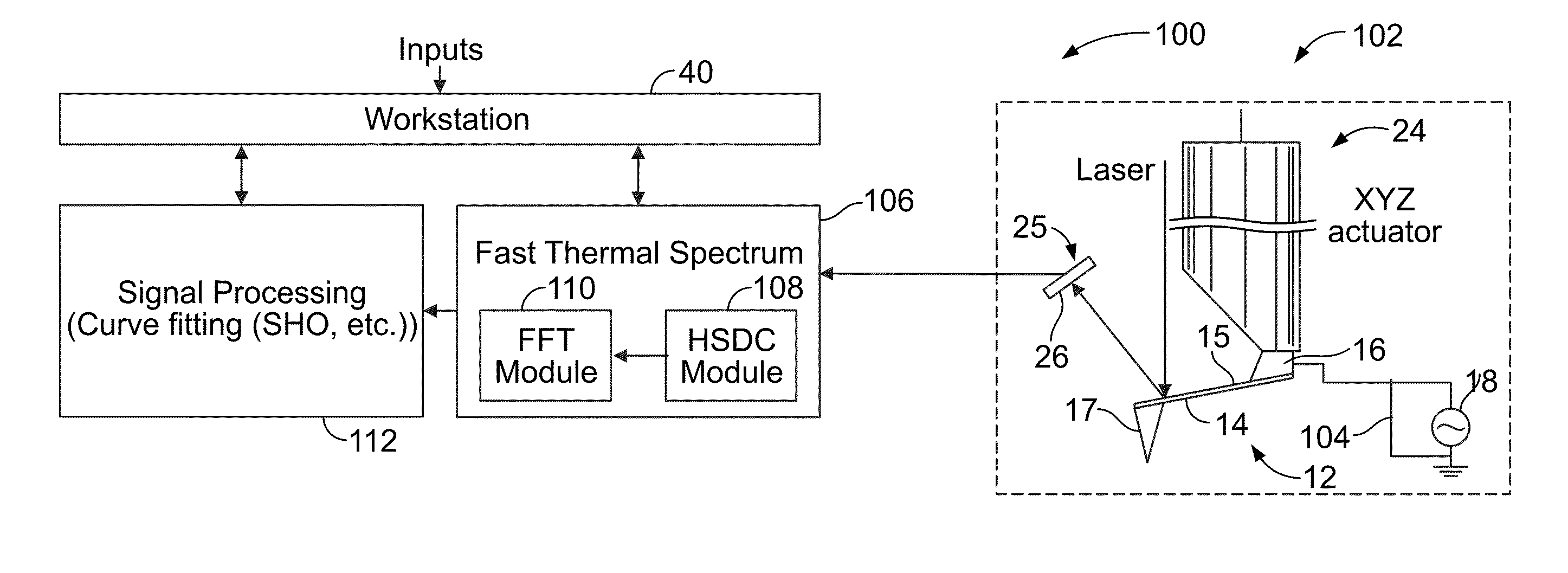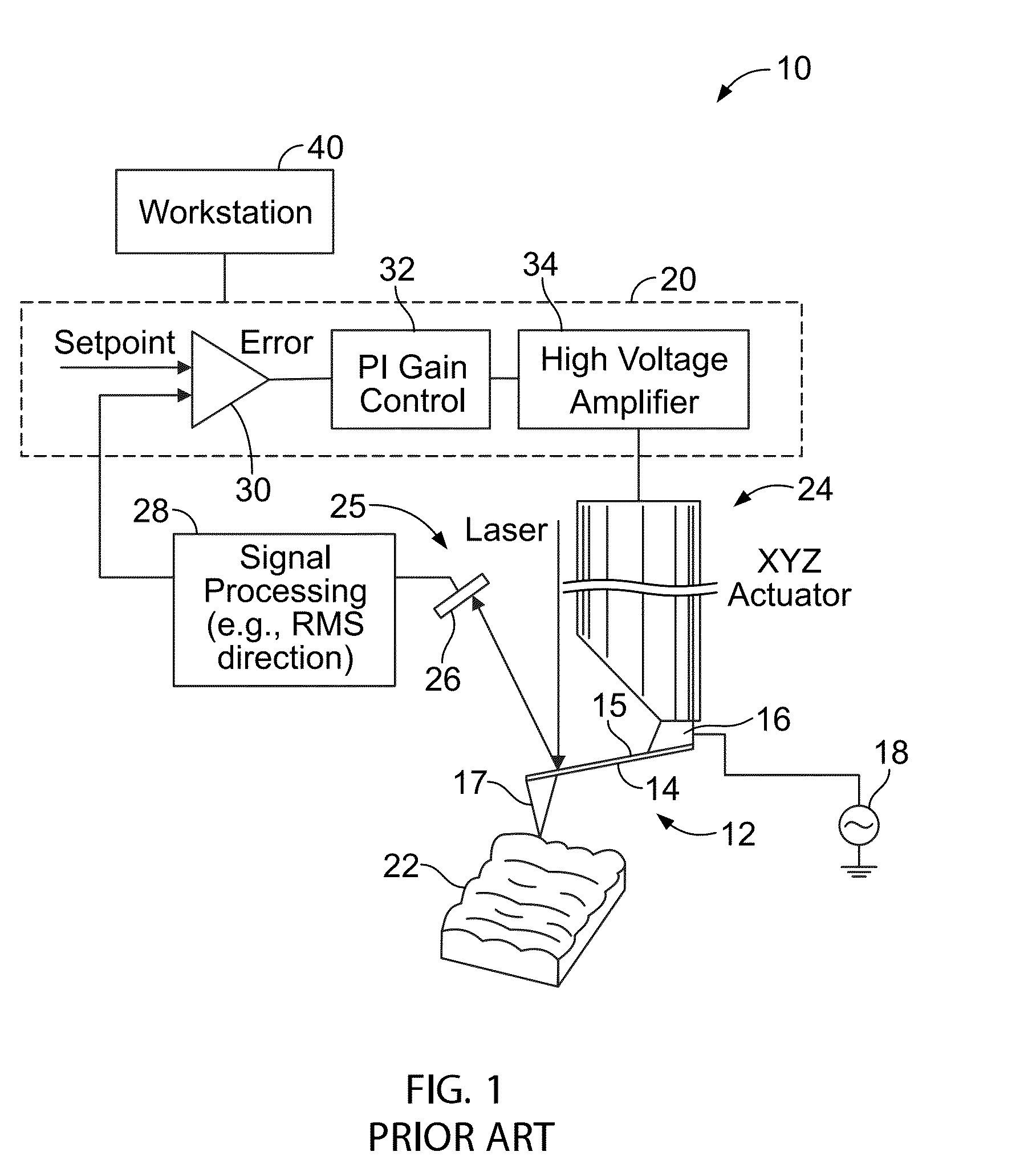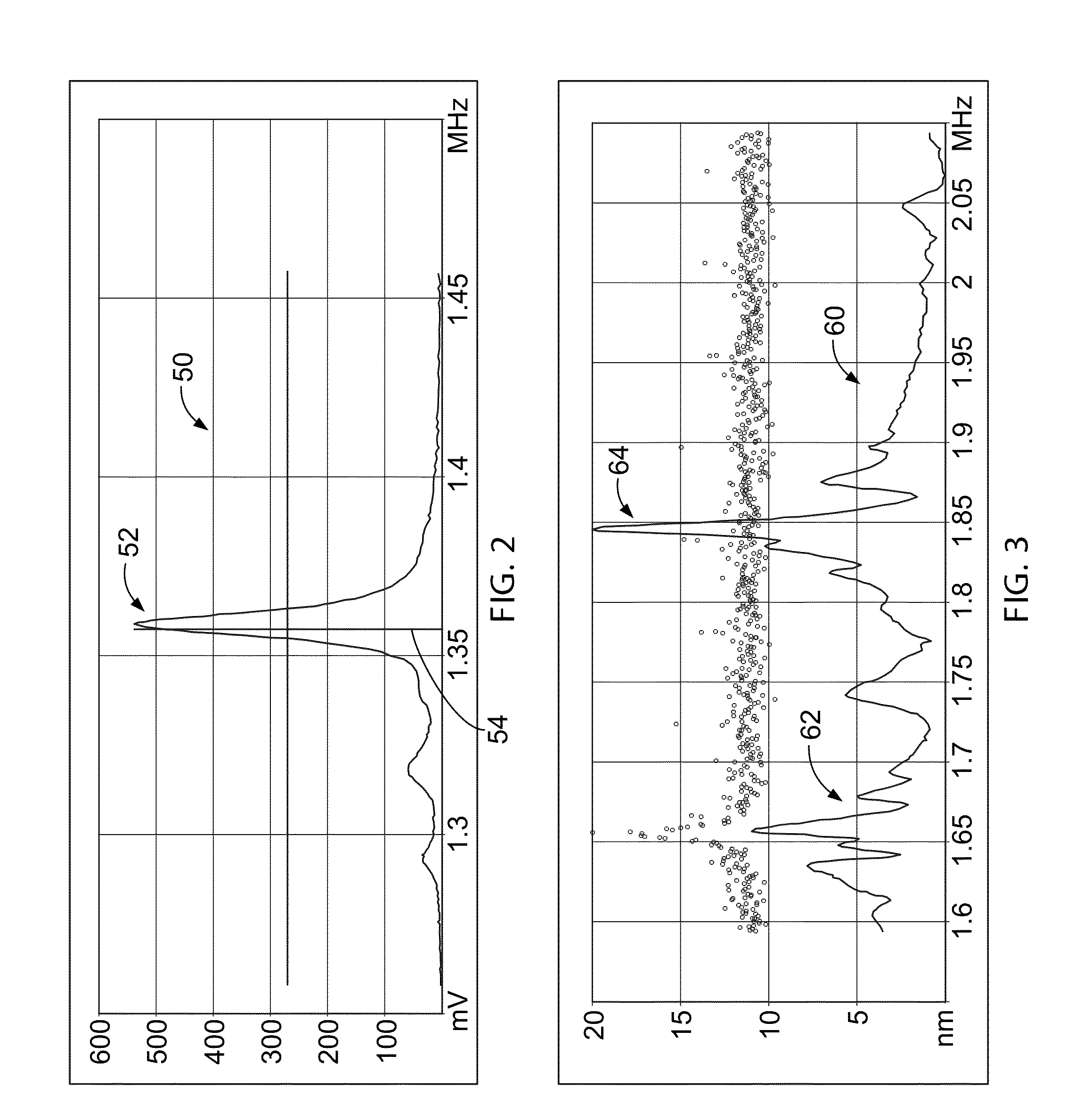Method And Apparatus Of Tuning A Scanning Probe Microscope
a scanning probe and microscope technology, applied in the field of scanning probe microscopes, can solve the problems of difficult control of the normal force acting on the sample surface, the tip will not track the sample, and the afm of the scanning probe, so as to improve the automatic tuning of the conventional atomic force microscope, fast generate thermally induced displacement, and improve the effect of processing hardwar
- Summary
- Abstract
- Description
- Claims
- Application Information
AI Technical Summary
Benefits of technology
Problems solved by technology
Method used
Image
Examples
Embodiment Construction
[0054]Contrary to known automatic tuning methods and apparatus used in connection with AFM operation, the preferred embodiments utilize only a thermally induced displacement power spectrum (TIDPS) to identify the resonant frequency of the AFM probe. The technique described herein allows the user to operate the AFM at an optimum drive frequency without the drawbacks associated with using conventional tuning curves, and with no human judgment. Prior to the present preferred embodiments, to tune an AFM, the user would always analyze (or call an auto-tune algorithm to analyze) the frequency swept amplitude response of the probe. By generating a TIDPS curve and considering only the peak(s) of that curve, the preferred embodiments avoid entirely the drawbacks associated with using conventional tuning curves to select AFM operating frequency.
[0055]Turning to FIG. 7, a system 100 for tuning an AFM 102 according to the preferred embodiments is shown. In contrast to conventional auto-tuning a...
PUM
 Login to View More
Login to View More Abstract
Description
Claims
Application Information
 Login to View More
Login to View More - R&D
- Intellectual Property
- Life Sciences
- Materials
- Tech Scout
- Unparalleled Data Quality
- Higher Quality Content
- 60% Fewer Hallucinations
Browse by: Latest US Patents, China's latest patents, Technical Efficacy Thesaurus, Application Domain, Technology Topic, Popular Technical Reports.
© 2025 PatSnap. All rights reserved.Legal|Privacy policy|Modern Slavery Act Transparency Statement|Sitemap|About US| Contact US: help@patsnap.com



